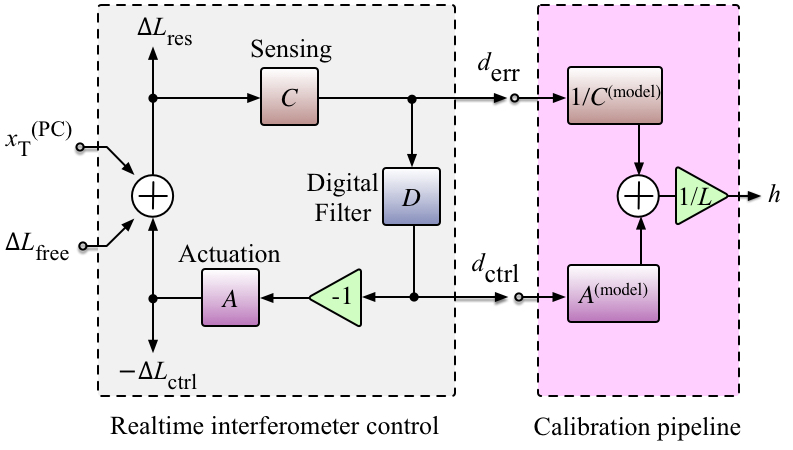On September 14, 2015, the Advanced Laser Interferometer Gravitational-Wave Observatory (Advanced LIGO) detected the passing gravitational waves generated by a coalescing pair of black holes. This event has been given the name GW150914. To determine the characteristics of passing gravitational waves, we need to calibrate the detector. The gravitational wave signal is encoded on the detector output, and calibration is the process in which the gravitational wave signal is decoded from the detector output. Without this knowledge it would be difficult to claim a detection! With good calibration, we can accurately estimate the amplitude (height) and phase (point along the oscillation) of the gravitational wave. Once these properties of the gravitational waves are determined, general relativity is used to determine the masses of the black holes that produced GW150914, or events like it, as well as the distance, sky location, and other properties (see the GW150914 astrophysics summary).

Simplified diagram of an Advanced LIGO interferometer. Four highly reflective test masses form two Fabry-Perot arm cavities on the Earth, in the horizontal plane. At lower left, a power recycling mirror placed between the laser and the beamsplitter increases the power stored in the arms to 100 kW. A signal recycling mirror, placed between the beamsplitter and the GW readout photodetector, alters the frequency response of the interferometer to differential arm length fluctuations. For clarity, only the lowest suspension stage is shown for the optics. Inset: one of the dual-chain, quadruple pendulum suspension systems is shown in the vertical plane.
Calibration is what enables scientists to convert the detector output to the amount of arm length difference changes (a measure of the strain of the passing gravitational wave). When a gravitational wave is sensed by the detector, the arm lengths change by only about 1×10−19 m (one ten-thousandth of the diameter of a proton), so the detector calibration has to be at least that precise. To achieve this level of sensitivity, the Advanced LIGO detectors are carefully managed by a variety of feedback control loops. These control loops keep the detectors in a state where they are able to detect passing gravitational waves. The most important of these control loops is the one that holds the difference of the lengths of the interferometer arms steady. Scientists construct a sophisticated computer model of the detector behavior and many measurements of the detector’s characteristics are used as inputs to the model. The measurements also inform scientists about the uncertainty in the detector output that can influence the reconstruction of the parameters of GW150914 or similar events. To make accurate and precise measurements of parameters like black hole masses, it is therefore essential to make the most accurate and precise calibration as possible.

Block diagram of the differential arm length feedback control loop. The sensing function, digital filter function, and actuation function combine to form the open loop transfer function.
A key tool in the calibration procedure is the use of an additional laser that is directed onto an end mirror of each detector. The laser varies in power, causing a variation in the force (from the recoil of photons) it produces on the mirror surface. This is called a “photon radiation pressure actuator”. The force on the end mirror causes the mirror to move from its equilibrium position by a known amount. The Advanced LIGO detectors sense this induced length variation of the interferometer arms. These length variations are tiny—at the same scale as those of the passing gravitational waves, about 1×10−19 m. It is remarkable that the force caused by the photons from a small, one-watt laser beam is able to move a 40 kg (88 pound) mirror by an amount that is easily measurable by the LIGO detectors!
Near the time of GW150914, the Advanced LIGO detectors were calibrated by making detailed comparisons between the computer models of the detectors and the actual responses of the detectors to the photon radiation pressure actuators. Scientists established an overall level of uncertainty of less than 10% in the wave amplitude and 10 degrees in phase. The eventual goal is to reduce the uncertainties of the calibrated detector output so that, with further refinements and improvements to the calibration model, the measured astrophysical values will not be limited by the calibration uncertainties.
Read more:
- Freely readable preprint of the paper describing the details of the full analysis and results is available at arXiv.org

